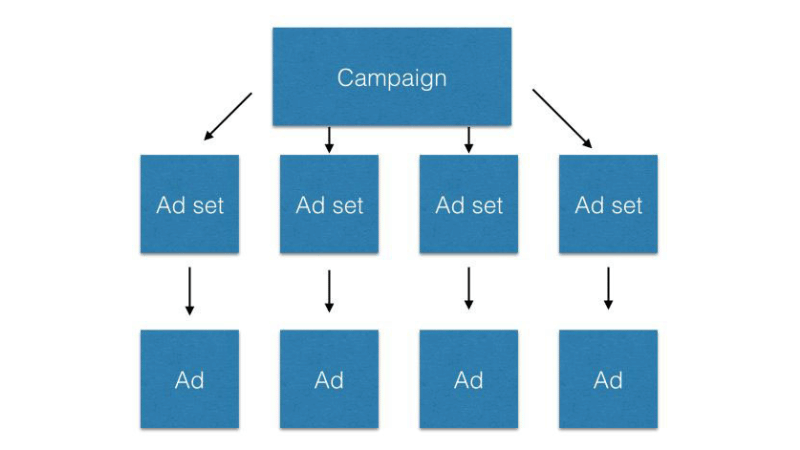Facebook ad management goes beyond just running a few ad creatives and waiting for results. Behind every successful campaign is a process of careful analysis, measurement, and scaling. With advanced Facebook ad management, advertisers need to understand how to control the budget, maintain performance, and detect signs of waste early. By knowing how to scale a campaign at the right time, you not only save costs but also double the effectiveness of reaching potential customers, helping the brand achieve sustainable growth without relying on chance.
When to scale a Facebook ads campaign
Not every effective campaign should be scaled immediately. Scaling in Facebook ad management requires careful observation and calculation, as a hasty move can cause performance to drop faster than you think.

Signs the campaign is ready for scaling
A campaign should only be scaled once it has demonstrated stability for a long enough period. Specifically, the conversion rate should be maintained at a stable level for at least seven to ten days, the Cost Per Result (CPR) should not fluctuate sharply, and the audience segment should continuously provide positive feedback. Additionally, metrics like Ad Frequency, CTR, and ROAS need to be within a reasonable range compared to the initial goals.
When you have sufficient data thickness to analyze clear trends, that is a sign that the campaign is “mature” enough to scale. Scaling at this point not only helps increase revenue but also allows the Facebook algorithm to understand user behavior more deeply, thereby distributing ads more accurately.
Do not scale too early, even if the ad is performing well
Many advertisers tend to increase the budget as soon as they see positive initial results. However, Facebook needs time to stabilize the ad distribution process (learning phase). If you scale too early, the algorithm can become confused due to the sudden change, leading to fast spending but low efficiency.
This causes the Cost Per Conversion to spike, audience overlap, and a decrease in overall performance. Another common mistake is increasing the budget too aggressively in a short time, forcing Facebook to search for new user segments without sufficient optimization data.
Instead, you should be patient, monitor performance across different timeframes, and only start scaling when the results are truly solid. Maintaining a stable pace helps you avoid budget burnout and ensures the ad still achieves its core objective.
Foundational factors required before increasing the budget
Before thinking about scaling up, you need to ensure your foundational system is ready to handle the load. First is customer data: you need a large and accurate enough file for Facebook to have a basis for expanding the search for lookalike audiences.
Second is ad content: when scaling, the same ad creative will reach many different groups, so the visuals, message, and Call-to-Action must be optimized for each segment. Next is the landing page or website: the destination users are led to must ensure fast loading speed, a friendly interface, and persuasive content.
No matter how well a campaign runs, it cannot maintain effectiveness if users abandon the page due to a poor experience. Finally, the data tracking system: you need to have pixel, event tracking, and measurement tools fully installed to understand user behavior. When these factors operate smoothly, increasing the budget becomes much safer and more effective.
Scaling strategies without breaking performance
Scaling Facebook ad management is the goal many advertisers aim for once the Facebook Ads campaign has achieved stable effectiveness. However, increasing the budget or duplicating the campaign without a clear strategy easily leads to reduced performance, an increased Cost Per Result, and audience overlap.

Clearly define goals and audience
The first step in any scaling strategy is to clearly define the goal and the customer segment you want to target. Once you know the specific goal, such as increasing conversions, sign-ups, or revenue, you can adjust the budget and ad distribution accordingly.
The customer segment needs to be accurately categorized by age, gender, interests, behavior, and geographic location. This helps avoid wasting the budget on unsuitable individuals and maximizes effectiveness from the highly engaging audience group.
Furthermore, data from previous campaigns also provides crucial information to assess who the most potential users are, thereby creating high-quality lookalike audiences. When the goals and audience are clear, the subsequent scaling steps become more efficient and less risky.
Vertical scaling
Vertical scaling focuses on increasing the budget for the same customer segment that has proven effective. This strategy allows the Facebook Ads algorithm to continue optimizing ad distribution to the user group most likely to take action.
When applying vertical scaling, you should increase the budget gradually, for example, by 10 to 20 percent every few days instead of doubling the budget at once. This gradual increase helps the algorithm adapt, reducing the risk of sudden performance drops.
Simultaneously, observing metrics like Cost Per Result, Ad Frequency, and engagement rate will allow you to adjust promptly if any anomalies appear. This strategy is suitable when you want to maintain stability and fully exploit the potential of the known effective customer group.
Horizontal scaling
While vertical scaling focuses on the same customer segment, horizontal scaling aims to find new audience groups or test different ad types.
This strategy includes creating new Ad Sets targeting lookalike audiences, experimenting with different interest or behavior segments, or using new ad formats such as video, canvas, or collection ads. Horizontal scaling helps expand the reach while maintaining stable performance, as you are not changing the customer segments that have proven effective.
However, this strategy requires close monitoring to avoid cost dispersion and data overlap between Ad Sets. When implemented correctly, horizontal scaling allows for the exploration of new markets without affecting the performance of the original campaign.
By combining both scaling approaches, advertisers can simultaneously increase revenue and expand the potential customer file while maintaining solid performance. Clearly defining goals, categorizing customer files, and increasing the budget in controlled steps helps the campaign continue to deliver sustainable results. Applying a smart scaling strategy not only helps maximize ad potential but also saves budget, reduces risk, and facilitates more accurate data-driven decisions.
How to sustain long-term growth without significant extra costs
Once the Facebook Ads campaign has achieved initial effectiveness, the next challenge is to sustain long-term growth without excessively increasing the budget. This requires advertisers to both control costs and ensure performance does not drop, while maximizing the use of current data and campaign structure. A typical example is the application of high-converting sample Facebook Lead Ads for every industry, which both saves cost and maintains a continuous conversion rate.

Signs of budget dispersion or waste
To identify if the budget is being dispersed or wasted, you need to closely observe metrics related to Cost Per Result, Ad Frequency, and engagement level. If an Ad Set is continuously spending money but not generating significant conversions or the Click-Through Rate (CTR) is below average, this is a clear sign that the budget is not being allocated appropriately.
Furthermore, running too many ad variations without focusing on the effective creatives can also lead to increased costs and decreased performance, resulting in resource waste. Monitoring these alerts helps the advertiser timely adjust and reallocate the budget to the truly effective groups.
Keep the budget focused on effective ad sets
Once effective Ad Sets have been identified, the crucial step is to focus the budget on these groups. This not only helps reduce wasted costs but also maximizes the conversion rate from audiences that have been determined to be potential.
You should increase the budget slightly for effective groups instead of increasing all of them simultaneously, while also considering duplicating the winning Ad Sets to maintain stability in performance.
Key metrics to track for early detection of decline
To sustain the growth momentum, tracking a set of crucial metrics is indispensable. Basic metrics like Cost Per Result, Click-Through Rate (CTR), Conversion Rate, and ROAS need to be checked periodically to detect early signs of performance decline. If these metrics begin to worsen, you can quickly intervene by optimizing the Facebook ad management group, adjusting the budget, or changing the distribution objective.
Additionally, tracking Ad Frequency and audience competition levels also helps you recognize when the campaign needs content refreshment or testing new ad variations, thereby maintaining long-term stable performance without incurring excessive extra costs.
Frequently Asked Questions
How to stabilize the distribution algorithm when a campaign doubles its budget while maintaining a stable ROAS?
Increase the budget incrementally, keep the same winning Ad Set, and monitor the learning phase to ensure the algorithm relearns correctly.
Set up a separate campaign for each country, maintain a similar Ad Set structure, and standardize KPIs, avoiding the use of a single campaign for all markets.